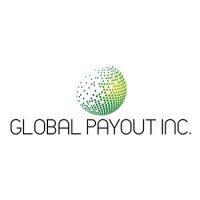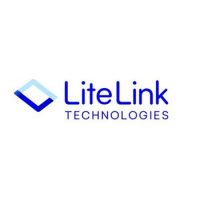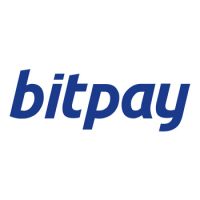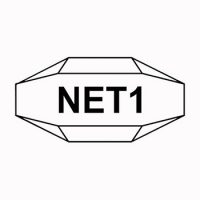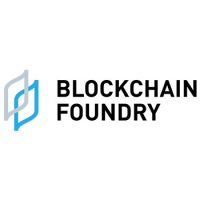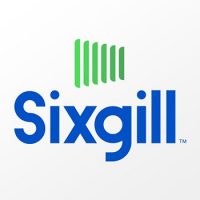Blockchain
Wellfield Announces $19 Million Preliminary Unaudited Revenue in Q3 2022 – Launches Global Growth Strategy
- Q3 2022 is the first period that includes full quarter results from Coinmama, which the Wellfield acquired at the end of May 2022. The Company expects gross margin in Q3 to be approximately breakeven, consistent with Q2 2022.
- The Company’s early initiatives to grow revenue, users, and engagement have been successful, and are expected to accelerate during Q4 with the launch of its mobile financial app.
- Wellfield is on track to continue growing quarterly recurring revenue in Q4 and through the remainder of 2023 driven by organic and new paid user acquisition, enhanced monetization of its over 3.5 million registered users, the introduction of institutional products and services, and the launch of Wellfield’s proprietary blockchain protocols to its consumer and institutional users.
Toronto, Ontario–(Newsfile Corp. – October 21, 2022) – Wellfield Technologies, Inc. (TSXV: WFLD) (FSE: K8D) (the “Company” or “Wellfield“), today announced Preliminary Unaudited Revenue of $19 million for the three-month period ended September 30, 2022. This compares to revenue of $5.7 million in Q2 2022 (includes one month of Coinmama results), and nil revenue in Q1 2022. The Company will release its full financial results for the third quarter during the final week of November. All figures in this press release are in Canadian Dollars ($)
Management Commentary
Levy Cohen, CEO of Wellfield commented, “The efforts of our global team and the strength of the Coinmama brand, translated into solid Q3 preliminary unaudited revenue against the backdrop of lower overall revenues across the crypto space. We have been persistently executing since closing this acquisition and fully expect Coinmama and the introduction of Wellfield Capital to drive significant revenue growth and accelerate our path to positive cash flow over the next several quarters.”
Mr. Cohen continued, “Coinmama, our consumer brand, is one of the most enduring and trusted brands for global consumers, with one of the highest Trustpilot scores in our industry. Our global growth strategy to drive both short-term success and sustainable recurring revenues on this foundation is straightforward and achievable. The first phase is focused on user growth and retention, which will launch in Q4. The second phase is centred on the introduction of an enhanced feature set that will deliver new opportunities for our users to cut costs, earn more and maintain control of their digital assets. Users will be able to save, earn yield, trade crypto assets, make payments to merchants, transfer funds to each other, lend and borrow, all from one location, without giving up custody of their funds. We expect the next 12 months to be very active for our company and an exciting period of value realization for Wellfield shareholders.”
About Wellfield Technologies (TSXV: WFLD) (FSE: K8D)
Wellfield builds advanced technology that uses blockchain to create and bridge to the next generation of financial solutions for institutions and consumers. The Company has strong academic and development expertise in the rapidly growing blockchain sector, building its branded applications and critical infrastructure solutions directly on public blockchains like Bitcoin and Ethereum.
Join Wellfield’s digital community on LinkedIn and Twitter, and for more details, visit wellfield.io
For further information contact:
Wellfield Technologies Inc.
Levy Cohen, CEO
[email protected]
Jonathan Ross, Investor Relations
[email protected]
(416) 283-0178
For media enquiries, please contact Kieran Lawler:
[email protected]
(416) 303-0799
Cautionary Notice on Forward-Looking Statements
This press release contains statements that constitute “forward-looking information” (“forward-looking information”) within the meaning of the applicable Canadian securities legislation. All statements, other than statements of historical fact, are forward-looking information and are based on expectations, estimates and projections as at the date of this news release. Any statement that discusses predictions, expectations, beliefs, plans, projections, objectives, assumptions, future events or performance (often but not always using phrases such as “expects”, or “does not expect”, “is expected”, “anticipates” or “does not anticipate”, “plans”, “budget”, “scheduled”, “forecasts”, “estimates”, “believes” or “intends” or variations of such words and phrases or stating that certain actions, events or results “may” or “could”, “would”, “might” or “will” be taken to occur or be achieved) are not statements of historical fact and may be forward-looking information. Forward-looking statements in this news release include statements regarding the Company’s success in launching the protocols and other technologies and utilities discussed herein, the integration, expansion and continued revenue generation of Coinmama, and the anticipated strategic, operational and competitive benefits of the Acquisition;. In disclosing the forward-looking information contained in this press release, the Company has made certain assumptions. Although the Company believes that the expectations reflected in such forward-looking information are reasonable, it can give no assurance that the expectations of any forward-looking information will prove to be correct. Known and unknown risks, uncertainties, and other factors which may cause the actual results and future events to differ materially from those expressed or implied by such forward-looking information. Such factors include, but are not limited to: compliance with extensive government regulations; domestic and foreign laws and regulations adversely affecting the Company’s and Coinmama’s business and results of operations; the anticipated launch of products may not be realized as intended or at all; the strategic, operational and competitive benefits of the Acquisition may not be realized; the impact of COVID-19; the decentralized finance industry generally, in Canada and abroad; and general business, economic, competitive, political and social uncertainties. Readers are cautioned that the foregoing list is not exhaustive and readers are encouraged to review the disclosure documents accessible on the Company’s SEDAR profile at www.sedar.com. Readers are further cautioned not to place undue reliance on forward-looking statements as there can be no assurance that the plans, intentions or expectations upon which they are placed will occur. Such information, although considered reasonable by management at the time of preparation, may prove to be incorrect and actual results may differ materially from those anticipated. Except as required by law, the Company disclaims any intention and assumes no obligation to update or revise any forward-looking information to reflect actual results, whether as a result of new information, future events, changes in assumptions, changes in factors affecting such forward-looking information or otherwise.
The TSXV has neither approved nor disapproved the contents of this news release. Neither the TSXV nor its Regulation Services Provider (as that term is defined in the policies of the TSXV) accepts responsibility for the adequacy or accuracy of this release.
SOURCE Wellfield Technologies Inc.
Blockchain
Blocks & Headlines: Today in Blockchain – May 28, 2025 (Angermayer, Soneium, ASIC, Guo, DMG)

Blockchain technology and cryptocurrencies continue to evolve at breakneck speed, driving new partnerships, regulatory battles, service launches, and environmental innovations. Today’s briefing highlights five pivotal developments:
-
Christian Angermayer’s investment in Uranium Digital, signaling a shift toward tokenized commodities.
-
Sony’s Soneium launch, embedding Web3 into entertainment via a layer-2 blockchain.
-
ASIC’s lawsuit against a former Blockchain Global exec, underscoring regulatory scrutiny over exchange failures.
-
Cointelegraph’s coverage of civil proceedings against Liang “Allan” Guo, reinforcing Australia’s hard line on director accountability.
-
DMG Blockchain’s carbon-neutral Bitcoin transactions, blending green initiatives with custody services.
We’ll unpack each story with concise coverage, opinion-driven commentary, and “Source” attributions—arming you with context and SEO-rich keywords like blockchain, cryptocurrency, Web3, DeFi, and NFTs.
1. Christian Angermayer Backs Uranium Digital’s Tokenized Commodities
Summary: Christian Angermayer, the German biotech billionaire and prominent crypto investor, has joined Uranium Digital as a strategic investor and advisor—aiming to bring uranium trading onto blockchain rails and open commodities markets to tokenized liquidity .
Analysis & Commentary:
Angermayer’s move represents a pivotal moment for asset tokenization, blending commodity markets with DeFi liquidity. By leveraging blockchain’s transparency and fractional ownership, Uranium Digital could democratize access to a market historically reserved for large institutional players. However, regulatory frameworks for nuclear materials are stringent—navigating cross-border compliance will be as critical as the technical on-chain architecture. This partnership may set a precedent for other “hard asset” tokenization ventures seeking both capital and credibility.
Source: Fortune/Yahoo Finance
2. Sony’s Soneium: A Layer-2 Web3 Revolution for Entertainment
Summary: Sony’s new layer-2 blockchain, Soneium, launched in January 2025 to facilitate fast, low-cost transactions for gaming, NFTs, and creator economies. Built on Ethereum’s OP Stack, it has processed over 70 million transactions and hosts 62 dApps, including partnerships with Bandai Namco and Gaudiy.
Analysis & Commentary:
With Soneium, Sony is not just experimenting with blockchain; it’s reimagining digital ownership in entertainment. By targeting high-volume use cases—gaming items, fan tokens, event ticketing—Sony leverages its brand authority to accelerate Web3 adoption. Yet mainstream uptake hinges on seamless user experiences: integrated wallets, intuitive NFT management, and clear value for collectors. If Sony can mask blockchain’s complexity behind familiar interfaces, Soneium could become the template for corporate-led Web3 platforms.
Source: CCN
3. ASIC Sues Former Blockchain Global Exec Over $20M in Claims
Summary: The Australian Securities and Investments Commission (ASIC) filed civil proceedings against former Blockchain Global director Liang “Allan” Guo for allegedly misusing over A$20 million of ACX Exchange customer funds and breaching directors’ duties.
Analysis & Commentary:
This lawsuit highlights the regulatory imperative to protect retail crypto investors. As exchanges fail, the lack of segregated custodial accounts leaves users exposed to directors’ mismanagement. ASIC’s aggressive stance sends a clear signal: exchange governance and financial controls are non-negotiable. Blockchain firms must prioritize transparent accounting, regular audits, and robust compliance frameworks—or risk severe legal consequences.
Source: Decrypt
4. Australian Regulator Takes Guo to Court: Cointelegraph’s Perspective
Summary: Cointelegraph reports ASIC’s civil case against Allan Guo, focusing on alleged false statements and improper fund co-mingling at ACX Exchange, which left over A$22.7 million in creditor claims.
Analysis & Commentary:
Cointelegraph’s coverage underscores a broader trend: jurisdictional enforcement is catching up with crypto’s borderless nature. By spotlighting both Guo’s departure from Australia and the court’s pursuit, the story reinforces that geographical escape won’t shield executives from liability. Going forward, global crypto platforms must embed compliance in governance structures rather than treating it as an afterthought.
Source: Cointelegraph
5. DMG Blockchain Enables Carbon-Neutral Bitcoin Transactions
Summary: DMG Blockchain Solutions, via its subsidiary Systemic Trust Company and Terra Pool, now offers regulatory-compliant, carbon-neutral Bitcoin transactions using Fireblocks custody infrastructure and green energy-backed mining pools.
Analysis & Commentary:
By integrating carbon-neutral protocols into custody and settlement, DMG addresses the sustainability critique of Bitcoin. Financial institutions increasingly demand ESG-aligned crypto services; DMG’s offering could capture that market. The challenge lies in quantifying and auditing green claims, ensuring the offset mechanisms are transparent and verifiable. If DMG nails this, carbon-neutral Bitcoin may shift from niche demand to mainstream expectation.
Source: GlobeNewswire
Conclusion
Today’s stories illustrate how blockchain’s frontiers—from tokenized commodities and corporate Web3 platforms to regulatory crackdowns and green coin initiatives—are rapidly expanding. Key takeaways:
-
Tokenization’s next wave: Hard assets like uranium may redefine DeFi’s scope.
-
Enterprise blockchains: Sony’s Soneium could blueprint corporate-run layer-2 networks.
-
Regulatory rigor: ASIC’s actions against Guo reinforce that compliance and fund segregation are mandatory.
-
Sustainable crypto: Carbon neutrality in Bitcoin transactions is evolving from buzzword to business imperative.
Stay tuned for tomorrow’s Blocks & Headlines, where we’ll bring you the latest strategic partnerships, technological breakthroughs, and policy updates driving the blockchain revolution.
The post Blocks & Headlines: Today in Blockchain – May 28, 2025 (Angermayer, Soneium, ASIC, Guo, DMG) appeared first on News, Events, Advertising Options.
Blockchain
Streamex and BioSig Announce the Successful Closing of Share Exchange Transaction and Executive Leadership Changes Bringing a First-Mover Real World Asset Tokenization Company to the Nasdaq
Blockchain
USA Tariffs and Impact on E-Commerce, Payments, and Cross-Border Trade Analysis Report: Chinese Cross-border Sellers are Struggling with Rising Costs
-

 Blockchain Press Releases6 days ago
Blockchain Press Releases6 days agoCM Global Services (CMGS) Secures Exclusive Multi-Year Logistics & Procurement Partnerships with Compass Mining and NovoMod
-

 Blockchain Press Releases6 days ago
Blockchain Press Releases6 days agoWSPN Launches New Website, Unveiling Enhanced Vision for Next-Generation Stablecoin Infrastructure
-

 Blockchain Press Releases5 days ago
Blockchain Press Releases5 days agoCompass Mining Partners with Synota’s “Impact Mining” Initiative to Transform Bitcoin Hashrate into Community Impact
-

 Blockchain Press Releases6 days ago
Blockchain Press Releases6 days agoBybit Card Rolls Out New Lucky Draw for Guaranteed Wins Including a Tesla
-

 Blockchain5 days ago
Blockchain5 days agoBioSig Technologies, Inc. Signs Definitive Share Exchange Agreement with Streamex Exchange Corp. to Launch First-Mover Real-World Asset (RWA) Tokenization Company Bringing Commodity Markets On-Chain.
-

 Blockchain6 days ago
Blockchain6 days agoFrom Onboarding to Settlement in Minutes: TransFi Launches BizPay to Redefine Global Business Payments
-

 Blockchain6 days ago
Blockchain6 days agoFreeman Quantitative Trading(FQAI) 5.0 Is Coming—Ushering in a New Wave of Intelligent Investing
-

 Blockchain6 days ago
Blockchain6 days agoSimplify Labs Expands Educational Outreach with Monthly Crypto Webinars

















